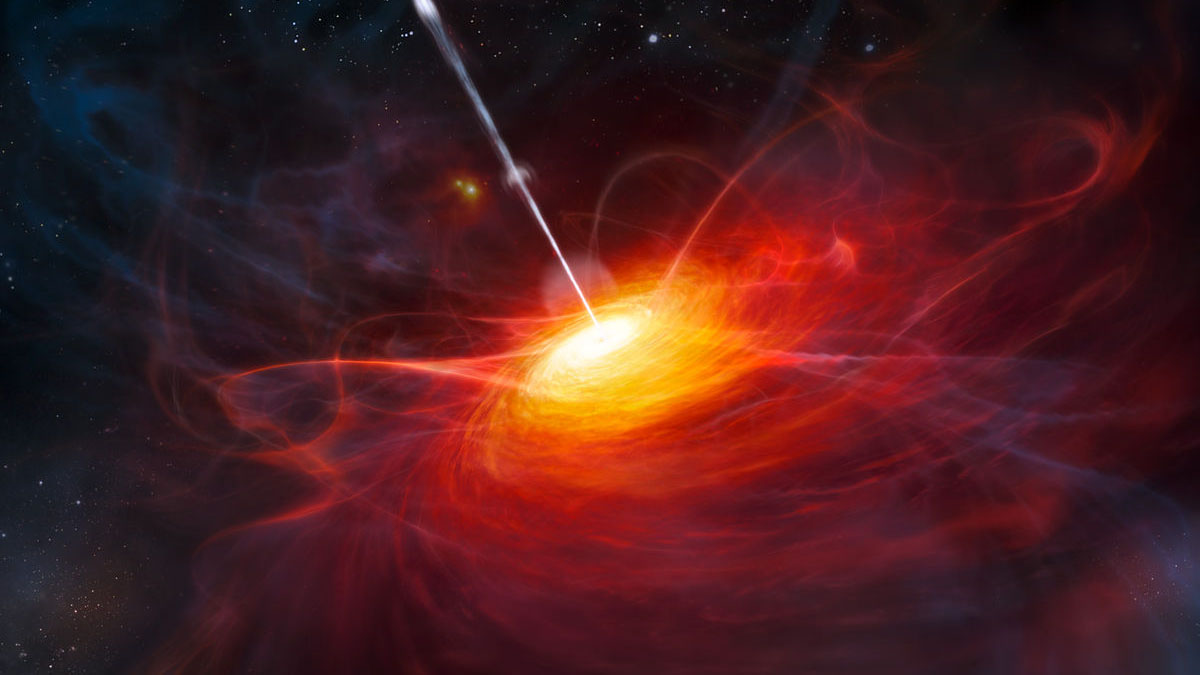do quasars break the laws of physics?

Today, it’s pretty much common knowledge that time doesn’t behave the same way across space. The shape of the space-time fabric around massive objects like stars and planets actually slows its passage, and since the universe is constantly expanding, events seem to unfold slower the farther back in time we look relative to our planet’s position in the cosmos. For example, a distant supernova with roughly the same power output as their more recent counterparts will fade slower, and this phenomenon allows cosmologists to measure just how fast our universe is inflating. But when it comes to measuring the time dilation in primeval quasars, the typically reliable physics governing time dilation seem to break down according to astronomer Mike Hawkins.
Quasars are galaxies with active, feeding black holes spewing out light and beams of radiation, and because the supermassive black holes at their hearts are messy eaters which light up when the galaxy is young or in the middle of a massive collision, we usually have to look very far back in space and time to see them. That’s what we’ve been doing for decades, keeping detailed records along the way. And those records attracted Mike Hawkins’ attention because data on about 900 quasars gathered between 50 days and 28 years prior doesn’t seem to show the effects of time dilation.
Whether the quasar was 6 billion or 10 billion light years away, their redshift samples were the same in sharp contrast to what one would expect. So what’s going on? Is this proof that maybe Einstein got it wrong and general relativity doesn’t work when it comes to explaining the behaviors of very large, very luminous, distant objects? Well, no, not quite. Hawkins provided a few explanations for what we’re seeing and why without taking a shot at Professor Einstein…
Black holes large enough to sway the rotation of entire galaxies bend time and space around them, sending out gravitational waves and quite possibly creating small gravitational lenses which alter how we perceive the redshift from distant galaxies. If most of the quasars in question are creating these small gravitational lenses, we wouldn’t expect to see pronounced effects of time dilation in the light coming from them. No need to try and overturn general relativity when light being bent by the black holes’ powerful tidal forces could account for what Hawkins found in his survey.
Another, far less exotic explanation, is the possibility of errors in the original data, something that could be checked with a deeper look at quasars located in the same 6 and 10 billion light year ranges. Though if we’re not seeing the bizarre cosmic effects of supermassive black holes in quasars or bad data, we may need to review whether the modern Big Bang theory may be wrong, even though these quasars would directly conflict with volumes of evidence from huge supernova and GRB surveys which offered a strong confirmation for our existing theories and uncovered a number of cosmological surprises…
See: Hawkins, M. (2010). On time dilation in quasar light curves Monthly Notices of the Royal Astronomical Society DOI: 10.1111/j.1365–2966.2010.16581.x





